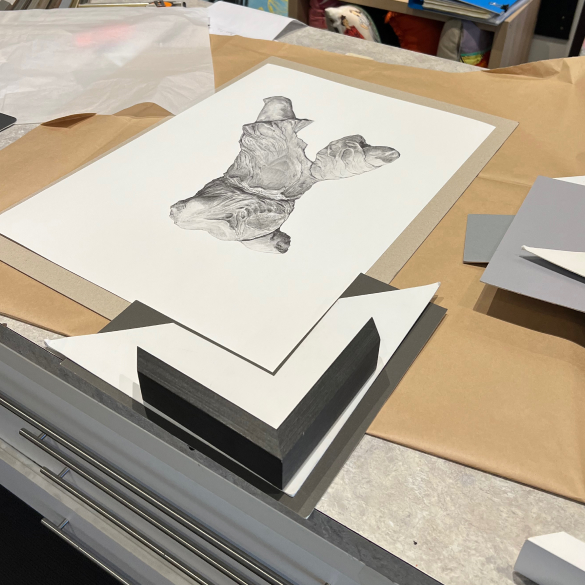A Limited Edition Print
Iris of the Rainbow
Iris of the Rainbow is a detailed illustration of one of the Parthenon Marbles. This illustration is part of a series of works which raise awareness of stolen Greek cultural artefacts which reside in the British Museum.
The Greek government and the Hellenic Diaspora have consistently called upon the British Museum to return these cultural artefacts to their rightful home in Athens, Greece.
The British Museum has to this date declined to do so.


Framed A2 Limited Edition Print
Fine art print of the original illustration
Giclee high-quality art print
Moab Entrada Natural 300gsm
Framed in White box frame with double mount
Print Size: A2 W420mm x H594mm
Frame Size: W580mm x H760mm
Signed and Numbered by the Artist
Only 25 prints available
$900 AUD
The original illustration is made of raw graphite on textured fine art paper.
Each print is framed and prepared to order.



The daughter of the gods Thaumas and Electra — the mother of the god of love, Eros.
Iris was both the personification of the rainbow and a messenger to the ancient Greek Olympian Gods.
In ancient art Iris was depicted as a young goddess with powerful wings bearing messages and water for the gods.
Like many of the ancient Greek works, Iris is depicted as a woman of strength and feminine power — depicted in sculpture with the wind pushing against her drapery as she flies through the air.
This illustration is of a sculpture of the goddess Iris created by Pheidias in 438BC - 432BC which once resided on the west pediment of the ancient Parthenon before it was taken by British military.
The sculpture was stripped off the Parthenon's pediment (the large triangular roof structure of the Parthenon) by British military in 1801 who then took this and many of the Parthenon's sculptures to England where they reside to this day in London's British Museum.
"You must understand what the Parthenon Marbles mean to us. They are our pride. They are our sacrifices.
They are the supreme symbol of nobility.
They are a tribute to democratic philosophy.
They are our aspiration and our name.
They are the essence of Greekness."
Melina Mercouri, Athens Greece
Iris.
Location British Museum, Item No. 1816,0610.96
Museum Title Series: The Parthenon Marbles
Produced by Pheidias
Culture Classical Greek
Production date 438BC - 432BC
Made in Athens, Greece
Material Marble
A marble statue from the West pediment of the Parthenon. The West pediment showed the mythical contest between Athena and Poseidon for supremacy over the land of Attica.
The sculpture survives as a female torso preserved to the knees. The statue wears a short, sleeveless chiton girdled at the waist, probably with a metal girdle that is now missing. The drapery clings to her body in some places, while elsewhere the folds of material flutter around restlessly.
Arms and wings, which were inserted into the shoulders at the back, are missing. It has been suggested that the missing head could be the so-called Laborde head, now in the Musée de Louvre, Paris. The statue has been identified as Iris, the winged messenger goddess. The movement of the drapery and the pose of the sculpture suggest the rush of wind against her body during flight.
Source British Museum
Photograph by Bill Zules

Print & Frame
Giclee art print.
Custom-frame to order.
Allow 2-4 weeks
for custom-framing.
Safely packed
All frames are safely packed
to avoid damage during shipping.
World-wide shipping
Australia-wide shipping.
International shipping.
Local pick up available in Melbourne, Australia.
Shipping calculated once your order is submitted and charged to you seperately.
Subscribe to be notified of new print releases.
© Dimitri Antonopoulos
